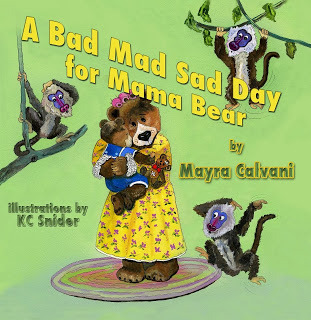Mayra Calvani's Blog, page 16
June 5, 2014
5 Questions with Faye Rapoport DesPres
 Faye Rapoport DesPres is the author of the new memoir-in-essays, Message from a Blue Jay. She earned her M.F.A. in Creative Writing from the Solstice MFA Program at Pine Manor College. Her essays, fiction, poetry, and reviews have appeared in Ascent, International Gymnast Magazine, Platte Valley Review, Superstition Review, In the Arts, Fourth Genre, TheWhistling Fire, the Writer’s Chronicle, and other journals and magazines. Faye was born in New York City and has lived in England, Israel, and Colorado. She currently lives in the Boston area with her husband, Jean-Paul Des Pres, and their cats. Visit her website at www.fayerapoportdespres.com.
Faye Rapoport DesPres is the author of the new memoir-in-essays, Message from a Blue Jay. She earned her M.F.A. in Creative Writing from the Solstice MFA Program at Pine Manor College. Her essays, fiction, poetry, and reviews have appeared in Ascent, International Gymnast Magazine, Platte Valley Review, Superstition Review, In the Arts, Fourth Genre, TheWhistling Fire, the Writer’s Chronicle, and other journals and magazines. Faye was born in New York City and has lived in England, Israel, and Colorado. She currently lives in the Boston area with her husband, Jean-Paul Des Pres, and their cats. Visit her website at www.fayerapoportdespres.com. Facebook / Blog
About the book
From an astonishing blue jay to a lone humpback whale, from the back roads of her hometown to the streets of Jerusalem and the Tower of London, debut author Faye Rapoport DesPres examines a modern life marked by a passion for the natural world, unexpected love, and shocking loss, and her search for a place she can finally call home in this beautifully crafted memoir-in-essays.
Three weeks before DesPres's fortieth birthday, nothing about her life fit the usual mold. She is single, living in a rented house in Boulder, Colorado, fitting dance classes and nature hikes between workdays at a software start-up that soon won't exist. While contemplating a sky still hazy from summer wildfires, she decides to take stock of her nomadic life and find the real reasons she never "settled down." The choices she makes from that moment on lead her to retrace her steps-in the States and abroad-as she attempts to understand her life. But instead of going back, she finds herself moving forward to new love, horrible loss, and finally, in a way that she never expected, to a place she can almost call home.
Readers who love the memoirs and personal essays of rising contemporary writers such as Cheryl Strayed, Joy Castro, and Kim Dana Kupperman will appreciate Faye's observational eye, her passion for the natural world and the creatures that inhabit it, and her search for the surprising truths behind the events of our daily lives.

INTERVIEW:
Q: What’s inside the mind of a Creative Nonfiction author?
A: Every creative nonfiction writer has his or her own inspiration, ideas, and goals when it comes to writing. If we have anything in common, it might be the desire to not simply record true stories, but to find meaning and revelation in the world around us and the events of our lives.
Q: Tell us why readers should buy MESSAGE FROM A BLUE JAY.
A: Message From a Blue Jay offers insight into one writer’s life, observations, and interpretations of the world, but it also provides fodder for thoughts about readers’ own lives. Readers who enjoy learning about different places, readers who enjoy observing and picking up cues from the natural world, and readers who enjoy self-searching and growth should all enjoy the book. I’ve been told that it’s a difficult book to put down because readers get drawn in very quickly. Writers who are interested in the personal essay genre and the craft of prose might enjoy the different approaches to creative nonfiction that appear in the book.
Q: What makes a good Memoir or Memoir-in-Essays?
A: Like any good book, a good memoir (or memoir-in-essays) contains an absorbing story that captures the reader’s attention and imagination, and takes readers on an interesting ride. It’s also thought-provoking, illuminating, and well-written.
Q: What is a regular writing day like for you?
A: This varies; when I’m involved in a particular project, I often write from 5 a.m. or 5:30 a.m. until 7 a.m. in the mornings. I have to work at other jobs to make a living, so if I don’t get my writing done early in the morning, before the rest of the world hits, I often don’t get to it later in the day. Sometimes this changes, however. If I have revisions to do for a deadline, I might work on them at any time of the day.
Q: What do you find most rewarding about being an author?
A: It has been a life-long dream to publish a book-length manuscript, so it is fulfilling to know that I worked hard and stuck with that dream, and made it happen. Since the book was published, it has been most rewarding to hear from readers who have said that they couldn’t put the book down and that they related to many of the things I wrote about. Some readers have said the book really moved them or made them feel less alone in their own feelings or observations. That’s wonderful.
Published on June 05, 2014 03:45
•
Tags:
creative-nonfiction, memoir
June 4, 2014
5 Questions with Latino Author Silvio Sirias
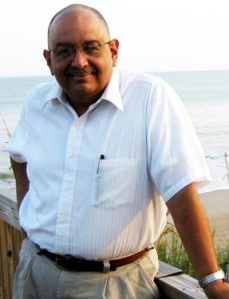 Silvio Sirias is the author of Bernardo and the Virgin (2005) and Meet Me under the Ceiba (2009), winner of the Chicano/Latino Literary Prize for Best Novel, and most recently The Saint of Santa Fe. A native of Los Angeles, he spent his adolescence in Nicaragua and currently lives in Panama. In 2010, Silvio was named one of the “Top Ten New Latino Authors to Watch (and Read).” He has a doctorate in Spanish from the University of Arizona. He has also published academic books on Julia Alvarez, Rudolfo Anaya, and the poet Salomon de la Selva. In addition, he has a collection of essays titled Love Made Visible: Reflections on Writing, Teaching, and Other Distractions. The Routledge Companion to Latino/a Literature lists him among the handful of authors who are introducing Central American themes into the U.S. literary landscape. For more information, visit his website at www.silviosirias.com.
Silvio Sirias is the author of Bernardo and the Virgin (2005) and Meet Me under the Ceiba (2009), winner of the Chicano/Latino Literary Prize for Best Novel, and most recently The Saint of Santa Fe. A native of Los Angeles, he spent his adolescence in Nicaragua and currently lives in Panama. In 2010, Silvio was named one of the “Top Ten New Latino Authors to Watch (and Read).” He has a doctorate in Spanish from the University of Arizona. He has also published academic books on Julia Alvarez, Rudolfo Anaya, and the poet Salomon de la Selva. In addition, he has a collection of essays titled Love Made Visible: Reflections on Writing, Teaching, and Other Distractions. The Routledge Companion to Latino/a Literature lists him among the handful of authors who are introducing Central American themes into the U.S. literary landscape. For more information, visit his website at www.silviosirias.com.
Q: What’s inside the mind of an author who writes fiction set in Central America?
A: Central America is full of wondrous stories with universal appeal. My novels are an attempt to take English-speaking readers into this magical, wondrous, yet sometimes tragic world.
Q: Tell us why readers should buy The Saint of Santa Fe.
A: During the 1970s and 1980s, thirty priests gave their lives in an effort to bring social justice to a region that was plagued by military dictatorships. The most famous case is that of the Salvadoran Archbishop Oscar Arnulfo Romero. The Saint of Santa Fe tells the story of the first priest to die, Father Hector Gallego, in Panama. His life and sacrifice is remarkable and they continue to inspire Panamanians today.
Q: What makes a good novel?
A: One that tells a story that penetrates the human heart.
Q: What is a regular writing day like for you?
A: I rise early, exercise to get the blood flowing and become fully awake, read the news that interests me, set up my writing area, and I begin by revising what I have written the day before. This helps my mind get back into my fictional world. Then, with the help of an outline, I plough ahead. I write until my ideas no longer seem fresh—which is usually around three in the afternoon. Afterwards, I do a few chores around the house before I settle down to watch a movie or an episode from my favorite television show at the time.
Q: What do you find most rewarding about being an author?
A: Hearing from readers who have been touched by something I created. Nothing beats the feeling that I’ve created something worth a reader sacrificing his or her leisure time.
Published on June 04, 2014 07:22
•
Tags:
hispanic-literature, latin-america, latino-authors
May 15, 2014
New release: The Luthier's Apprentice (YA fantasy)
I'm thrilled to announce the official ebook release of my YA fantasy, The Luthier's Apprentice, the first book in my new Emma Braun series.
The book is now for sale on Amazon and B&N.
A big thank you to all the bloggers who are taking part in my Release Day Blitz today! I can't thank you enough for your support!


Published on May 15, 2014 05:49
•
Tags:
paganini, violin, violin-maker, violinist, ya-fantasy
April 26, 2014
5 Questions with Lynn Steward, author of A VERY GOOD LIFE
 Lynn Steward is a successful business woman who spent many years in New York City’s fashion industry in marketing and merchandising, including the development of the first women’s department at a famous men’s clothing store. Through extensive research, and an intimate knowledge of the period, Steward created the characters and stories for a series of five authentic and heartwarming novels about New York in the seventies. A Very Good Life is the first in the series featuring Dana McGarry.
Lynn Steward is a successful business woman who spent many years in New York City’s fashion industry in marketing and merchandising, including the development of the first women’s department at a famous men’s clothing store. Through extensive research, and an intimate knowledge of the period, Steward created the characters and stories for a series of five authentic and heartwarming novels about New York in the seventies. A Very Good Life is the first in the series featuring Dana McGarry. About the Book
Although Lynn Steward’s debut novel, A Very Good Life, takes place in 1970s New York City. it has a timelessness to it. Dana McGarry is an "it" girl, living a privileged lifestyle of a well-heeled junior executive at B. Altman, a high end department store. With a storybook husband and a fairytale life, change comes swiftly and unexpectedly. Cracks begin to appear in the perfect facade. Challenged at work by unethical demands, and the growing awareness that her relationship with her distant husband is strained, Dana must deal with the unwanted changes in her life. Can she find her place in the new world where women can have a voice, or will she allow herself to be manipulated into doing things that go against her growing self-confidence?
A Very Good Life chronicles the perils and rewards of Dana’s journey, alongside some of the most legendary women of the twentieth century. From parties at Café des Artistes to the annual Rockefeller Center holiday tree lighting ceremony, from meetings with business icons like Estée Lauder to cocktail receptions with celebrity guests like legendary Vogue editor Diana Vreeland. Steward’s intimate knowledge of the period creates the perfect backdrop for this riveting story about a woman’s quest for self-fulfillment.
Purchase on Amazon.
Interview
Q: What’s inside the mind of a literary fiction author?
A: The characters’ inner narrative: their personal struggles and journeys, as they grow, learn, and conquer; whether it is overcoming a broken romance, a sudden loss, a reticent personality, or the troubling antagonist.
Q: Tell us why readers should buy A Very Good Life.
A: To reminisce, or simply enjoy an historic, 1970s snapshot of New York City – the background for Dana McGarry’s quest for self-fulfilment. Can Dana find her place in the new world where women have a voice, or will she allow herself to be manipulated into doing things that go against her growing self-confidence?
Q: What makes a good literary fiction?
A: Likeable, lingering characters.
Q: What is a regular writing day like for you?
A: My favourite time to write is early in the morning, around 5:30 a.m., when my mind is clear, it is peaceful and there are no interruptions. I don’t let anything distract me for at least three hours, and I am always surprised and disappointed how fast the time passes. I also can spend thirty hours at my desk during a quiet weekend, researching, outlining and writing. I never spend enough time with my story.
Q: What do you find most rewarding about being an author?
A: The process: outlining plots, developing characters, researching historical events, and most of all, the quiet time required to weave and write the story.

Published on April 26, 2014 12:51
•
Tags:
fashion-new-york, women-s-fiction
February 20, 2014
Meet F.W. Abel, author of Deeds of a Colored Soldier during the Rebellion, Volume 1: From the Beginning to Chickamagua
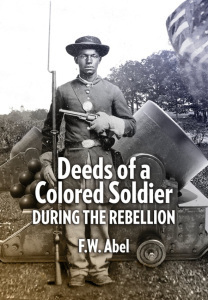 F.W. Abel was born in the city of New York, long ago enough to have not even been a teenager at the beginning of the Civil War Centennial. He escaped from Fordham University with a degree in psychology into the U.S. Army. The army had him function as a psychologist for a while, until he escaped from that into “the real army” that is, the infantry. After postings in Berlin, Tokyo and the southern United States, he left and became a junior executive in the insurance industry. He now labors diligently for the American taxpayer as a federal bureaucrat. He currently resides in a Maryland suburb of Washington, D.C. As many of the most important battles of the Civil war was fought within a relatively short distance, he has taken advantage and visited most of them, as well as several in the so-called “Western Theater.”
F.W. Abel was born in the city of New York, long ago enough to have not even been a teenager at the beginning of the Civil War Centennial. He escaped from Fordham University with a degree in psychology into the U.S. Army. The army had him function as a psychologist for a while, until he escaped from that into “the real army” that is, the infantry. After postings in Berlin, Tokyo and the southern United States, he left and became a junior executive in the insurance industry. He now labors diligently for the American taxpayer as a federal bureaucrat. He currently resides in a Maryland suburb of Washington, D.C. As many of the most important battles of the Civil war was fought within a relatively short distance, he has taken advantage and visited most of them, as well as several in the so-called “Western Theater.”Q: Congratulations on the release of your book, Deeds of a Colored Soldier during the Rebellion, Volume 1: From the Beginning to Chickamagua. How does it feel to be published for the first time?
A: I’m ecstatic, and apprehensive at the same time. I think just about anyone who writes something, anything, that took scores of hours and pounds (if not tons) of effort, wants to share their creation with the wider world. Of course, in doing so, said author leaves themselves open to criticism, and possibly, some of it is deserved. A work that made you a literary legend in your own mind just might not be perceived that way by readers. Hence, the ecstasy and the apprehension.
Q: What compelled you to write this Civil War story?
A: I recall a reviewer of the motion picture “Glory” as having stated it would have been interesting to know more about the African-American soldiers portrayed in the film, as it revolved around the story of their commanding officer. “Glory” was an outstanding movie, but it gave the impression that the 54th Massachusetts Regiment was the first colored regiment to fight. My novel kind of sets the record straight, and from the viewpoint of the enlisted men, the African-American soldiers who did the fighting. Also, I was a pre-teen during the Civil War Centennial, and I read a number of young adult novels with that theme. I essentially combined the two.
Q: Tell us something about your protagonist that my readers won’t be able to resist.
A: The novel tells the story of Jedediah as a young man, told by himself more than 30 years later. So a reader can see the enthusiasm and cock-suredness of a youth contrasted with rueful regret of his older, and perhaps wiser, self.
Q: Did your characters surprise you with their own ideas? Did you listen to them?
A: I remember reading long ago the novel, The Robe by Lloyd C. Douglas. It included a scene where Marcus asked a young man who had sculpted two gladiators what their names were. The young man thought he was being mocked, until Marcus explained that to really animate his two figures, they had to have names, past lives; they had to be real to him, or their sculpted selves would be lifeless. So, I created lives for them, before the action taking place in the novel. Of course, the great thing with dealing with fictional characters is the author’s ability to make any amendments needed to fit the narrative.
Q: How was your creative process like during the writing of this book and how long did it take you to complete it?
A: I wrote it linearly, without a formal outline, although I always knew where I was going. Historical fiction is great in that way, as it provides your general plot. The surprises came from filling in the details.
My book is about the rigors of war, and how life-changing, but a story with nothing but battles would bore even the most devoted reader of military fiction.
Q: How did you conduct your research?
A: I had an fairly extensive reading background in the Civil war from the time I was a pre-teen (I won’t tell you how long ago that was). But to insert a character into the major events portrayed in the novel required a considerable amount of research to get the minor details, in one case, weather conditions on a particular night, correct. Readers who read history fiction are also usually avid readers of history, and would be cognizant, and unappreciative, of dramatic license that did too much violence to the facts.
Q: How do you keep your narrative exciting throughout the creation of a novel without letting the historical details drag the pace?
A: You have to be judicious. You have to strike the delicate balance between verisimilitude and throwing in details to show how much research you did. And ideally, the minor historical details should have some bearing on the story. In one case, I made a big deal of the difference in the bullet sizes of two rifles, because (as really happened) during a battle, the soldiers ran out of one size of ammunition and were in dire straits because the only ammunition available was an unusable size.
Q: What is your writing schedule like and how do you balance it with your other work and family time?
A: I have a full-time job, so I have to fit writing in, but other things usually have priority. I look forward to the (now somewhat few) totally free days. I can write for 5-8 hours, but I can’t write anything good in one hour.
Q: Tell us about your publisher and how you found it.
A: After acquiring a fairly impressive collection of rejection letters, a friend going back to my college days introduced me to his publisher. The intro only got me so far, as like any good publisher, Lida Quillen wanted to judge the work for herself. Thankfully, she greeted it with enthusiasm and encouragement. I’m grateful to Lida, and my friend, Scott.
Q: What advice would you give to aspiring writers whose spouses or partners don’t support their dreams of becoming an author?
A: First, don’t get divorced. The number of aspiring authors is probably exceeded only by the number of aspiring actors, currently waiting tables, or the number of aspiring general currently serving as lieutenants. My wife has a business writing background, so I lured her in by having her do copy editing. Even so, although she liked my novel, she was still very skeptical that I had produced a saleable work. Sometimes, the person you have to convince is yourself.
On the other hand, writing is a less expensive hobby than golf or deep-sea fishing, so an aspiring author can approach it on that basis until the magic moment when he surprises even himself by having produced something good (good = publishable + saleable).
Q: Anything else you’d like to tell my readers?
A: There’s an old adage for writers, which is write what you know. To that, I would add, read, and extensively, because at some point, a reader could get the spark from something read to transition into a writer.

Published on February 20, 2014 03:58
•
Tags:
abolition, black-history-month, civil-war, slavery
February 9, 2014
Interview with Joan Heartwell, author of HAMSTER ISLAND


Joan Heartwell is a an award-winning author (with several novels published under another name) and a former indie publisher now working as a freelance writer, ghostwriter, and book consultant.
About the Book
Heartwell chronicles her heroic (and often hilarious) determination to live an unremarkable life as a member of a poverty-stricken, super-dysfunctional family that includes a mostly absent father, a religious fanatic mother, a kleptomaniac grandmother, and two special needs siblings, all residing more or less in the middle of a parking lot. The story moves from Heartwell’s lively coming of age in the sixties to her role as caretaker for both siblings after her parents’ deaths, at which time she must resort to extraordinary measures to locate the midpoint between their needs and her own.
Brilliant and magical, Hamster Island takes its rightful place among such darkly comic and original memoirs as Augusten Burroughs’ Running with Scissors and Jeannette Walls’ The Glass Castle.
Q: What’s inside the mind of a nonfiction author?
A: Generally I write fiction. But the circumstances of my youth—growing up the middle child between two special needs siblings in a family that was totally dysfunctional—are somewhat unique, and when friends suggested I write about them, I began to think it might be good to look at my life objectively, the way I would the subject of a novel. And it has been good. And even better, I am learning that my story is turning out to be helpful to a lot of other people.
Q: Tell us why readers should buy Hamster Island
A: Well, number one, it’s a good story, truly told. Since I’m a fiction writer, it reads like a novel. There’s plenty of humour in it, and also plenty of heartbreak.
As far as being helpful to readers, Hamster Island addresses issues that are common to anyone who has a loved one with mental illness or developmental disabilities in their family, especially if they are siblings. As a kid, I was really shy to begin with, so I lived in fear that if I made a mistake—academic, social, whatever—people would assume there was something wrong with me too. That’s quite a challenge for a little kid/teenager. And of course I felt incredible guilt for feeling ashamed of my siblings, our poverty, our whole dysfunctional family, and even our house, which was more or less situated in the middle of a parking lot.
My book brings up a lot of social issues too that will be of interest to some readers. Hamster Island is the real deal. You can’t read it and not get what it’s really like for families to raise developmentally disabled and/or mentally ill kids—not wealthy families who have the money to do it in style with nannies and outside help, but working-class families who have to get up every day and fight for food stamps, Medicare, and social justice—often to the exclusion of their own needs. I can think of several prominent politicians who might learn a thing or two from reading Hamster Island and, I’d like to believe, might actually change their stance on how we deal with people who just can’t make it all on their own, without state and government programs.
Q: What makes a good memoir?
A: My favourite memoirs are those by writers who are able to look back and find the humour in the hard times. I’m thinking Mary Karr, Augusten Burroughs, Jeanette Walls, Rachel Simon. If what I’ve done with Hamster Island comes even close to their work, I’m thrilled.
Q: What is a regular writing day like for you?
A: My personal writing schedule is irregular. I write for a living, generating everything from newsletters to full-length “ghost-written” manuscripts for clients. So I might only get one or two days a month free to work on my own projects. When I have a free day coming, I do the same thing I do when I have client work. I settle in front of my computer and I stay there for six or seven hours. For me, tenacity is key.
Q: What do you find most rewarding about being an author?
A: The process. It’s fun. It suits my disposition.
Q: How did you celebrate the completion of your book?
A: By starting the next one.
Published on February 09, 2014 04:33
•
Tags:
memoir
Interview with Joan Heartwell, author of HAMSTER ISLAND

Joan Heartwell is a an award-winning author (with several novels published under another name) and a former indie publisher now working as a freelance writer, ghostwriter, and book consultant.
About the Book
Heartwell chronicles her heroic (and often hilarious) determination to live an unremarkable life as a member of a poverty-stricken, super-dysfunctional family that includes a mostly absent father, a religious fanatic mother, a kleptomaniac grandmother, and two special needs siblings, all residing more or less in the middle of a parking lot. The story moves from Heartwell’s lively coming of age in the sixties to her role as caretaker for both siblings after her parents’ deaths, at which time she must resort to extraordinary measures to locate the midpoint between their needs and her own.
Brilliant and magical, Hamster Island takes its rightful place among such darkly comic and original memoirs as Augusten Burroughs’ Running with Scissors and Jeannette Walls’ The Glass Castle.
Q: What’s inside the mind of a nonfiction author?
A: Generally I write fiction. But the circumstances of my youth—growing up the middle child between two special needs siblings in a family that was totally dysfunctional—are somewhat unique, and when friends suggested I write about them, I began to think it might be good to look at my life objectively, the way I would the subject of a novel. And it has been good. And even better, I am learning that my story is turning out to be helpful to a lot of other people.
Q: Tell us why readers should buy Hamster Island
A: Well, number one, it’s a good story, truly told. Since I’m a fiction writer, it reads like a novel. There’s plenty of humour in it, and also plenty of heartbreak.
As far as being helpful to readers, Hamster Island addresses issues that are common to anyone who has a loved one with mental illness or developmental disabilities in their family, especially if they are siblings. As a kid, I was really shy to begin with, so I lived in fear that if I made a mistake—academic, social, whatever—people would assume there was something wrong with me too. That’s quite a challenge for a little kid/teenager. And of course I felt incredible guilt for feeling ashamed of my siblings, our poverty, our whole dysfunctional family, and even our house, which was more or less situated in the middle of a parking lot.
My book brings up a lot of social issues too that will be of interest to some readers. Hamster Island is the real deal. You can’t read it and not get what it’s really like for families to raise developmentally disabled and/or mentally ill kids—not wealthy families who have the money to do it in style with nannies and outside help, but working-class families who have to get up every day and fight for food stamps, Medicare, and social justice—often to the exclusion of their own needs. I can think of several prominent politicians who might learn a thing or two from reading Hamster Island and, I’d like to believe, might actually change their stance on how we deal with people who just can’t make it all on their own, without state and government programs.
Q: What makes a good memoir?
A: My favourite memoirs are those by writers who are able to look back and find the humour in the hard times. I’m thinking Mary Karr, Augusten Burroughs, Jeanette Walls, Rachel Simon. If what I’ve done with Hamster Island comes even close to their work, I’m thrilled.
Q: What is a regular writing day like for you?
A: My personal writing schedule is irregular. I write for a living, generating everything from newsletters to full-length “ghost-written” manuscripts for clients. So I might only get one or two days a month free to work on my own projects. When I have a free day coming, I do the same thing I do when I have client work. I settle in front of my computer and I stay there for six or seven hours. For me, tenacity is key.
Q: What do you find most rewarding about being an author?
A: The process. It’s fun. It suits my disposition.
Q: How did you celebrate the completion of your book?
A: By starting the next one.
Published on February 09, 2014 04:32
•
Tags:
memoir
December 19, 2013
Interview with Allen Malnak, author of ‘Hitler’s Silver Box’
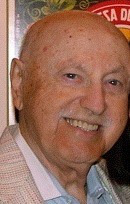 After completing his medical residency and liver disease fellowship, Dr. Malnak practiced as a board certified internist. He served as Chief of Internal Medicine at the US Army Hospital, Fort Sill, OK., and was medical director of several organizations. Dr. Malnak was also a Clinical Assistant Professor at the Stritch School of Medicine of Loyola University.
After completing his medical residency and liver disease fellowship, Dr. Malnak practiced as a board certified internist. He served as Chief of Internal Medicine at the US Army Hospital, Fort Sill, OK., and was medical director of several organizations. Dr. Malnak was also a Clinical Assistant Professor at the Stritch School of Medicine of Loyola University.Dr. Malnak’s father emigrated to the US from Lithuania when he was sixteen, leaving behind a large family. They were all subsequently sent to a Nazi death camp during World War II and were exterminated. As a result of that tragic familial history, Dr. Malnak developed a keen interest in the Holocaust and has read widely on the subject. He and his wife, Patricia, live in Florida with their whippet, Paige, and parakeet, Kiwi.Hitler’s Silver Box is his first novel.
Purchase the book on Amazon and B&N.
Q: What’s inside the mind of a historical thriller author?
A: Historical thrillers are even more difficult to plan and carry out than thrillers. I had a strong motive for writing Hitler’s Silver Box. My father’s entire large family was murdered by the Nazis. I realise that this happened a long time ago, and many people only have the vaguest idea as to what happened and more to the point how dangerous present day Nazis are. By integrating some of this into a current historical thriller, I was able to bring out these points. It’s important that the author find ways to put the protagonist in jeopardy while making the villain have some redeeming qualities—a complex balance. During the writing process I constantly focused on how best to put my readers into the story, i.e. to get them to smell the smells, to feel the heat on their face.
Q: Tell us why readers should buy Hitler’s Silver Box.
A: Hitler’s Silver Box is a historical thriller revealing a worldwide Nazi resurgence is inevitable unless a young physician finds and destroys an old document hidden in a silver box that his Holocaust survivor uncle was forced to make in a Nazi concentration camp and secretly buried in a Czech forest fifty years ago. The nephew and an attractive Israeli female companion with a military background are pursued and attacked by present day Nazis intent on reviving the Reich.
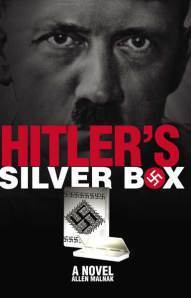 The novel gives a fresh look at a topic frequently covered in historical thrillers, will appeal to fans of Robert Harris, Alan Ensler, Elie Wiesel and Tadeusz Borowski and is smartly plotted with engrossing, believable characters. The book contains the complete journal of the Holocaust survivor, which greatly adds to the novel’s value.
The novel gives a fresh look at a topic frequently covered in historical thrillers, will appeal to fans of Robert Harris, Alan Ensler, Elie Wiesel and Tadeusz Borowski and is smartly plotted with engrossing, believable characters. The book contains the complete journal of the Holocaust survivor, which greatly adds to the novel’s value.
Q: What makes a good historical thriller?
A: Any thriller much grab the reader’s attention and hold it through often frightening twists and turns, as the protagonist faces increasing odds. The author of a historical thriller must accurately integrate historical facts into the story. This requires not only careful research but close attention to the smallest details. What kind of handgun would a Nazi SS officers carry during the Second World War? Some careful reader will know, and if the author has simply guessed wrong, well the reader loses faith in the accuracy of the rest of the story.
Q: What is a regular writing day like for you?
A: I’m a morning person, so I try to get in an hour or more writing before breakfast with a steaming cup of coffee at hand. I start by editing my previous writing and then just let go, trying to exclude my censor. I always say I’ll wait until the story or novel is complete to edit it, but my compulsive nature just won’t allow that. My mantra all the time is “write, rewrite, get it right.”
Q: What do you find most rewarding about being an author?
A: Hearing praise for my work, especially from fellow writers.
Q: How did you celebrate the completion of your book?
A: Took my wife and some friends to dinner. Toasted the completion with a fine Champagne.

Published on December 19, 2013 09:15
•
Tags:
historical-thriller, hitler, holocaust, suspense
December 4, 2013
Today Only - Dec. 4th - A Bad Mad Sad Day for Mama Bear is on sale for only $.99!
Little Bear offers Mama Bear various items to make her feel better, but she’s too busy to notice—until he gives her his super, so good, so very special dolly. Silly humor, alliteration, repetition, and onomatopoeia make this a fun read-aloud story. A celebration of the special love shared between mother and child. For ages 3-7.
ONLY $.99 on Kindle TODAY ONLY

Published on December 04, 2013 00:44
•
Tags:
bears, children-s-books, little-bear, mama-bear, picture-books
November 22, 2013
Interview with Ellen Castro, Author of ‘Spirited Leadership’
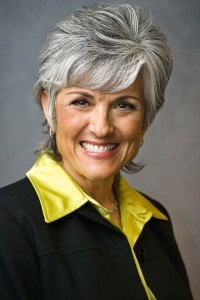 My guest is best-selling author, inspirational speaker, coach and global consultant Ellen Castro. Ellen’s clients range from start-ups to Fortune 500 companies to non-profits to schools and individuals. She has touched millions via keynotes and media appearances. She earned her MEd from Harvard and MBA from Southern Methodist University where she served on the faculty of the Edwin L. Cox Business Leadership Center for more than 15 years. Her first corporate experience was leading a $90 million profit center of 500 employees for Exxon in the 1970s, where she was the highest-ranking female in Marketing, with five promotions in just 11 years. Today she’s spreading the word about her latest nonfiction work, Spirited Leadership…52 Ways to Build Trust.
My guest is best-selling author, inspirational speaker, coach and global consultant Ellen Castro. Ellen’s clients range from start-ups to Fortune 500 companies to non-profits to schools and individuals. She has touched millions via keynotes and media appearances. She earned her MEd from Harvard and MBA from Southern Methodist University where she served on the faculty of the Edwin L. Cox Business Leadership Center for more than 15 years. Her first corporate experience was leading a $90 million profit center of 500 employees for Exxon in the 1970s, where she was the highest-ranking female in Marketing, with five promotions in just 11 years. Today she’s spreading the word about her latest nonfiction work, Spirited Leadership…52 Ways to Build Trust.Welcome, Ellen! Tell us what got you into coaching.
Thank you! ! Delighted for the opportunity. I started coaching officially in the 1980s when I worked for this amazing start-up after earning my MEd from Harvard. As director of organizational and management development, I traveled throughout the US coaching the leaders of 30+ HMOs to create cultures of trust, teamwork and excellence in an industry that was facing many challenges.
Unofficially, I’ve been a coach since college. I was a sophomore advisor and resident assistant as well as actively involved in many leadership/mentoring organizations. Then at Exxon, as a leader of a $90 million profit center with 500 employees, I coached my team to greatness and success. In fact, we won several awards!
I love helping and encouraging others and giving feedback in a way that it can be heard – without crushing the human spirit.
What compelled you to write Spirited Leadership… 52 Ways to Build Trust?
I was compelled based on my experience at Exxon. I battered my head on the glass ceiling at Exxon in the mid-1980s while scrambling up the corporate ladder. One fateful, dreary day in Houston, my boss, Ray, called me into his corner office. As Ray doodled, he informed me he was blocking my sixth promotion in 11 years. Stunned and dumbfounded, I asked why. He simply stated he did not like me or my jewelry. The world I knew imploded. I quit during a massive reorganization a few months later. Within a year — call it luck, synchronicity or grace — I was attending Harvard University to earn my second Master’s. The devastating, demoralizing, humiliating experience of losing my spirit and soul at work became my launching pad to living a life of excellence, my rewarding career and enjoying a fulfilling life.
What I considered punishment was simply preparation.
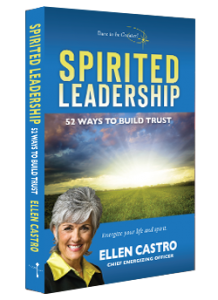 I want others to be equipped to embrace inevitable obstacles and use them as breakthroughs, not breakdowns. The 52 Ways provide a personal power leadership workout and concise resource for success regardless of external forces.
I want others to be equipped to embrace inevitable obstacles and use them as breakthroughs, not breakdowns. The 52 Ways provide a personal power leadership workout and concise resource for success regardless of external forces.We are our choices. We can live an amazing life of excellence, self-expression and success in all its many forms by harnessing our personal power.
What does it mean to live courageously and fearlessly and how can we achieve it?
Living courageously to me is living our lives, not the lives that others or the life society says we should live. Living our lives from the inside out based on values, respect, trust and love. Each of us was made on purpose for a purpose, of that I am sure. Each of us is given unique talents, skills, attitudes and aptitudes that are meant to change the world for the better.
Unfortunately, most of us are living in a state of fear and stress, I know I was — I still have my moments. In the past, I was driven by external validation, approval, acceptance and society’s definition of success. Externals can change in a heartbeat.
By grace, faith and better choices, I am now living from the truth within. I am loved, accepted and far more powerful than I imagine. I am made in the image of God. WOW! The 52 Ways provide the blueprint and toolkit to live courageously and fearlessly, to do what is right and fulfill our unique divine purpose.
Trust is the key. Trust for oneself, trust that life is for you and trust that you can be all that you were created to be with better choices. Every choice counts.
The book facilitates the readers’ feeling comfortable in their own skin thus gaining increased confidence to live boldly.
How does your book help people release their energy and creativity?
It is amazing how much energy and creativity I have freed up by living from the inside out. By trusting myself and trusting that life is for me, I can trust others and bring out the best in them.
When you live from your passion and purpose, there is no competition. You liberate your greatness and allow others to live from their potential instead of living from fear, doubt and survival. We all have greatness. We were meant for greatness!
The 52 ways allow the readers to harness their personal power, gain leadership muscle and emotional stamina – they did for me – to live from their greatness, not their self-imposed limitations
My life went from tragic to magic, from surviving to thriving. I learned the hard way and have enough gray hairs for all of us. These are my learnings I am delighted to share to make others’ lives easier, brighter and lighter!
Executives and leaders worldwide have used your book to create cultures of trust, sensational teamwork, innovation and excellence. Can you tell us how your book has helped them achieve this?
This book increases the executives’ and leaders’ awareness and provides them the tools to build and develop their leadership skills, abilities, emotional intelligence and people smarts. Did you know that emotional intelligence is up to 90% of the differential between leaders and managers according to Dr. Daniel Goleman – the leading expert in the field?
Spirited Leadership takes emotional intelligence and makes it practical by providing a concise description of the behavior, characteristic, attitude and/or action followed by insightful questions, practical exercises and success applications.
Many leaders use it as their go-to reference guide to solving immediate problems and challenges. Some managers and leaders have chosen to use it as a weekly team activity to create stronger bonds of trust and collaboration while building the capacity of the team members. Others use it as a coaching and mentoring guide.
Leaders have told me that it has made them very conscious of the impact they have on setting the culture. Culture beats strategy every time. They become conscious that everything communicates. There are no neutral actions. Everything they do either builds trust and increases their credibility or destroys it. Everything they do either unleashes potential and builds healthy self-esteem and confidence in themselves, others and the future or destroys it.
I could go on and on! I’ve seen the success my clients have had – it is inspiring and motivating!
Who is your target audience?
Anyone who wants the competitive edge in today’s stressful, non-traditional and intense times, where competence alone has ceased to be enough to succeed in business or in life.
The initial target audience in 1998 with the first edition was executives, leaders and managers in the workplace. Over the last 15 years the audience has expanded. It now includes people who are aspiring to those levels as well as influencers and professionals wanting better, quicker and enhanced results. Individuals entering the workplace are using it as an invaluable resource for assimilating into the workplace. Students are using it as their leadership primer and self-confidence igniter. Entrepreneurs are using the 52 Ways as a blueprint for building their brand value. Community volunteers and parents give it rave reviews for building better relationships in the community and at home. Associations such as Project Management Institute (PMI) and non-profits such as the Komen Foundation are buying it to uplift and educate their members.
Regardless of position, title, sector or industry, this concise book is relevant.
You remain active in the Hispanic community and co-authored Tortilla Soup for the Spirit. Tell us about this.
You are right, I do remain active in the Hispanic community — it is very important to me.
Tortilla Soup was a delight and honor to co-author. The heart-warming book is a delicious collection of works by Latinas and Latinos from across the country. The compilation reflects the many aspects of our heritage and culture, including our deep faith and love for life.
What important message you hope readers will get from your book?
We are our choices.
Every choice counts.
You are always on stage.
You are far more powerful than you imagine.
Live greater with trust!
Any last words you’d like to share with my readers?
Redefine failure.
Life is for you — promise.
You are meant for greatness!
Live empowered and energized.
Be a spirited leader!
Blessings and thanks!
Thank you, Ellen!
My interview was originally published in Blogcritics.

Published on November 22, 2013 09:41
•
Tags:
empowerment, leadership, success

